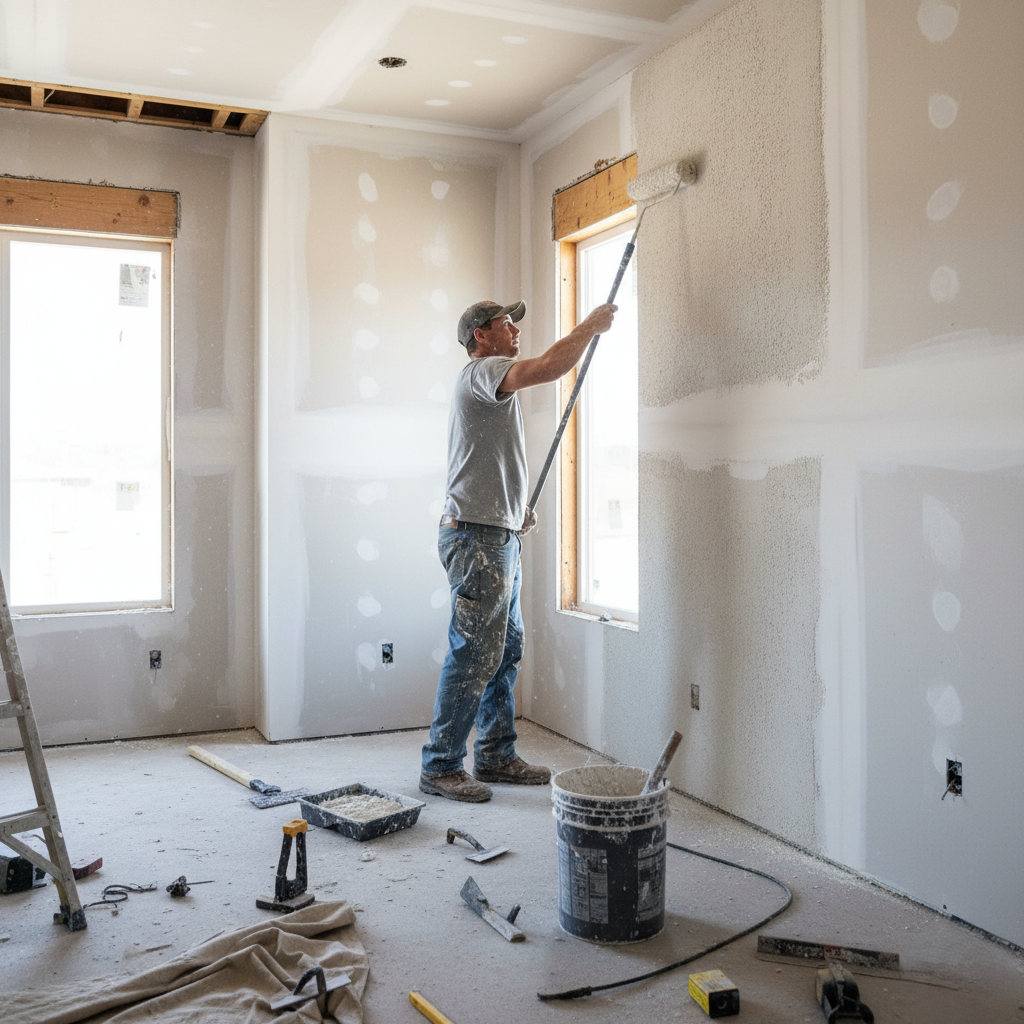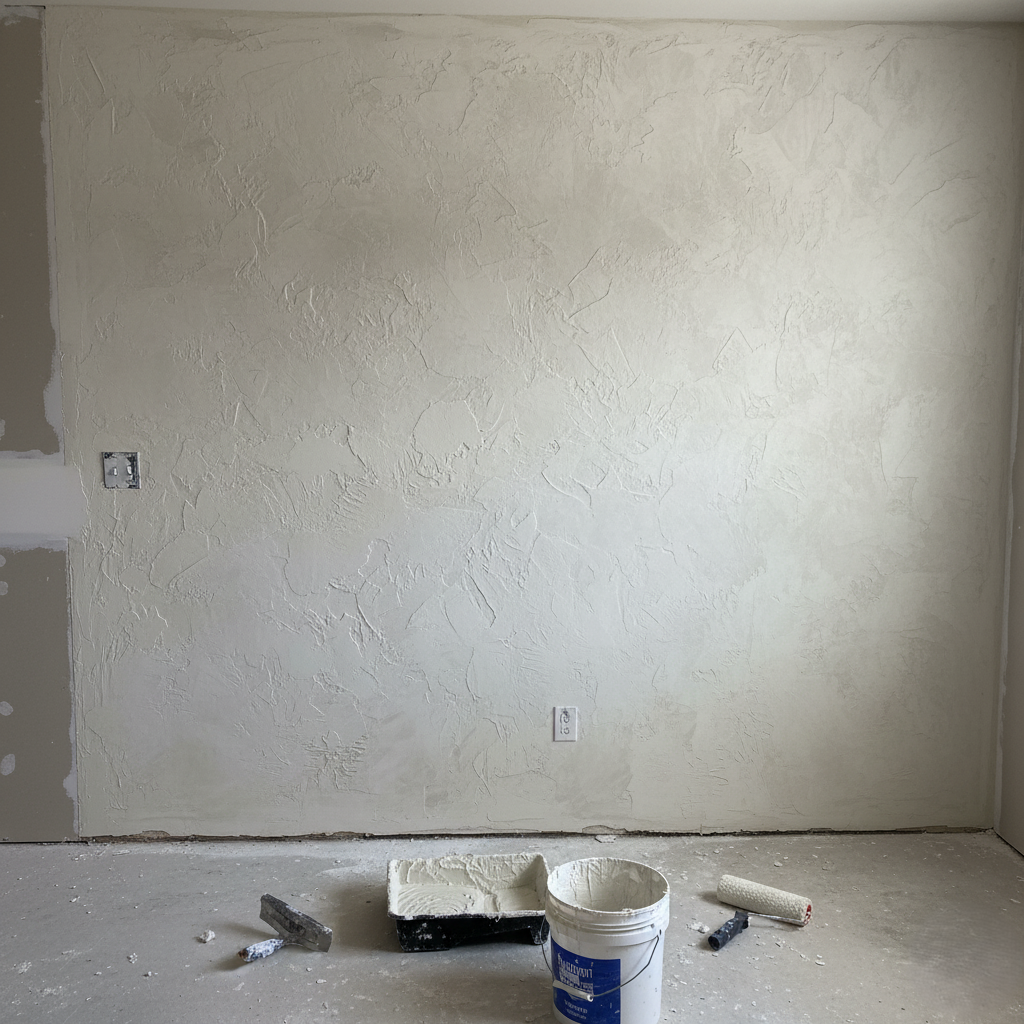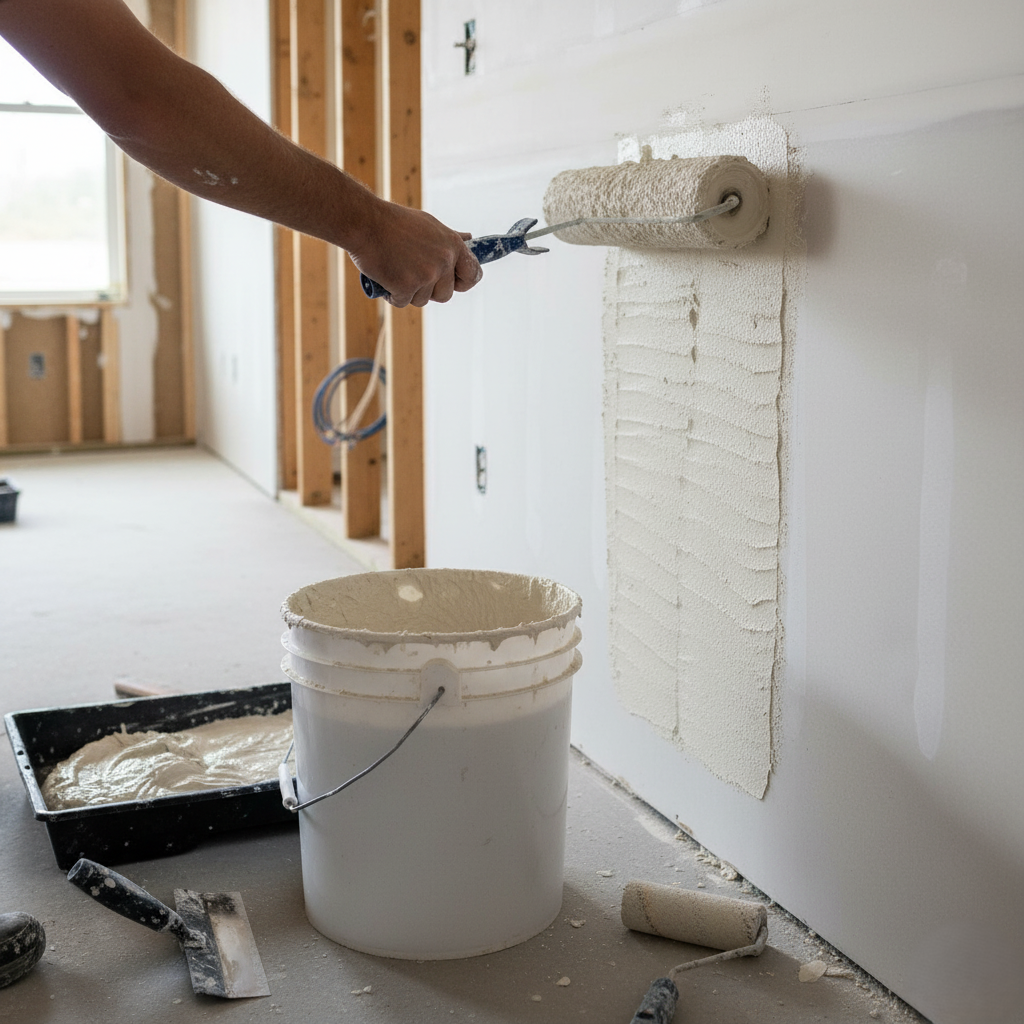Drywall Texturing in Colorado Springs

Drywall Texturing in Colorado Springs
Durable, Professional, and Expertly Finished
When it comes to creating stylish and durable walls, drywall texturing is one of the most trusted solutions. At Red Peak Drywall, we specialize in professional drywall texturing for homes and commercial properties across Colorado Springs and surrounding areas.
Whether you want a smooth finish, decorative texture, or a custom design for your walls, our drywall texturing services provide the quality, durability, and visual appeal you can rely on.
What Is Drywall Texturing?
Drywall texturing is the process of applying patterns and finishes to drywall surfaces to enhance their appearance and add depth. Using specialized techniques and materials, textured walls create a visually appealing surface that can complement any room while providing durability and a polished finish.

We use drywall texturing to enhance:
Texturing is applied over properly prepared drywall surfaces using specialized tools and techniques to achieve the desired pattern and finish.
Interior walls and living spaces
Ceilings and high-visibility areas
Accent and decorative wall sections
Hallways and entryways
Rooms that need added style, depth, or character

Why Choose Drywall Texturing?
There are many reasons why Colorado Springs property owners choose drywall texturing for their spaces. Textured finishes add depth, improve visual appeal, and help conceal minor imperfections on wall surfaces, creating a cleaner and more polished look throughout your home.
Common uses include:
- Feature walls in living rooms or bedrooms
- Decorative textures for hallways or entry areas
- Enhanced finishes for ceilings or accent spaces
Why People Love Drywall Texturing
Even a well applied drywall texture can make a significant difference in how your interior spaces look and feel.
Get Started with Drywall Texturing in Colorado Springs
Get a FREE Quote Today
SERVICES WE OFFER
AREAS WE SERVE
Need Help?
Get a Free Drywall Texturing Quote
CALL US TODAY
Phone Line
[number]
Mail Info
[email]
[Service] Installation FAQs
Drywall texturing is used to enhance the appearance of walls and ceilings, hide imperfections, and add depth or style to any room.
The thickness depends on the chosen texture technique, but it is typically applied in thin, even layers to ensure a smooth and durable finish.
Yes, drywall textures can be tailored to match your design preferences, from subtle finishes to bold, decorative patterns.
We prepare the surface properly, apply primer, and use professional tools and techniques to achieve a durable and even texture.
No, drywall texturing does not affect insulation, but it works seamlessly with your existing wall insulation and structure.
The time depends on the size of the project and the complexity of the texture, typically ranging from a few hours to a couple of days for larger areas.
Our Drywall Texturing Process
We follow a precise step-by-step process to ensure your walls are smooth, even, and perfectly textured from start to finish:
Planning the Design
We measure the walls, plan your project, and decide on the texture style, pattern, and layout.
Surface Preparation
We clean and smooth the drywall, apply primer if needed, and ensure the surface is ready for texturing.
Applying the Base Layer
A base coat or skim layer is applied evenly to create a smooth foundation for the texture.
Creating the Texture
Using specialized tools and techniques, we apply the chosen texture pattern consistently across the walls.
Detailing and Touch-Ups
We refine corners, edges, and joints to ensure a seamless and polished look.
Final Finishes
We inspect the textured walls, make any final adjustments, and ensure the surface is clean, smooth, and ready for painting or decoration.
Drywall Texturing Services for Residential and Commercial Projects
At Red Peak Drywall, we provide professional drywall texturing services for both residential and commercial properties. Whether you want to enhance the look of your home or add a polished finish to your business space, our skilled team has the expertise, tools, and techniques to deliver flawless results.

Residential Drywall Texturing Services
We ensure every project complements your home’s interior style and works seamlessly with your existing design and layout.
Textured interior walls for living rooms and bedrooms
Decorative accent walls for hallways and entryways
Custom wall finishes for kitchens or dining areas
Ceiling textures for added depth and style
Feature walls to highlight specific rooms or spaces
Commercial wall texturing for offices and retail spaces
Areas We Serve
Red Peak Drywall offers professional drywall texturing services throughout Colorado Springs and surrounding areas. If you’re looking for a skilled and reliable local team, we’re ready to assist.
We work in:

- Old Colorado City
- View Location
- Downtown Colorado Springs
- View Location
- Broadmoar
- View Location
- Briargate
- View Location
- Northwest Colorado Springs
- View Location
